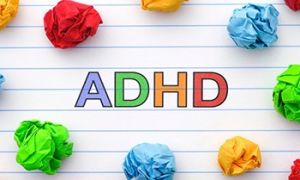Language not only refers to the spoken word but it also incorporates gesturing, facial expressions and verbal sounds. This is why language development for infants begins from when your baby is born. Infants are aware of sounds in the environment. They listen intently to other's speaking and begin to cry if they hear an unexpected noise. This is all part of your infant's language development.
Language Development Milestones
From 0 to 4 months
Infants respond differently depending on their environment. From when infants are only a couple of weeks old they will begin to have a distinct cry for different needs and become startled at loud noises. This is their only way of communicating. Within a couple of months, a smile appears. Different sounds such as cooing and gurgling begin to emerge as your infant begins verbalising in response to you “talking” to them.
Milestones Achieved
- expresses needs
- cries
- when content makes small throaty noises
- soothed by the sound of voice or by low rhythmic sounds
- imitates adult tongue movements when being held and talked to
- may start to copy sounds
- coos and gurgles
From 4 to 8 months
During this period, older infants pass from “cooing” to beginning to “babble”. Infants become more active in conversations and will give the impression of wanting to join in the discussion. They will also show interest in their surroundings, look at toys and observe others.
Milestones Achieved
- enjoys games such as peek-a-boo or pat-a-cake
- babbles and repeat sounds
- makes talking sounds in response to others talking
- copies sounds
- smiles and babbles at own image in a mirror
- responds to own name
From 8 to 12 months
There are two ways infants use language. First, they will listen to sounds that they hear and interpret them in their own way. This is known as receptive language. Secondly, infants will use their expressive skills, which enable them to make sounds of their own, so they can communicate with you. Most commonly an infant’s receptive language will be more advanced than expressive language.
Milestones Achieved
- responds to own name being called, family names and familiar objects
- babbles tunefully
- says words like 'dada' or 'mama'
- waves goodbye
- imitates hand clapping
- imitates actions and sounds
- enjoys finger-rhymes
- shouts to attract attention
- vocalises loudly using most vowels and consonants - sounding like a conversation
Infants begin to pay attention to others and become interested in what is happening around them. While communicating infant’s sounds have a pattern to them. They begin to use the same sound combination regularly and even while in the same situation. This is a sign that an infant is using language in a purposeful way and is communicating.
Note: Milestones have been updated as of 16th April 2020


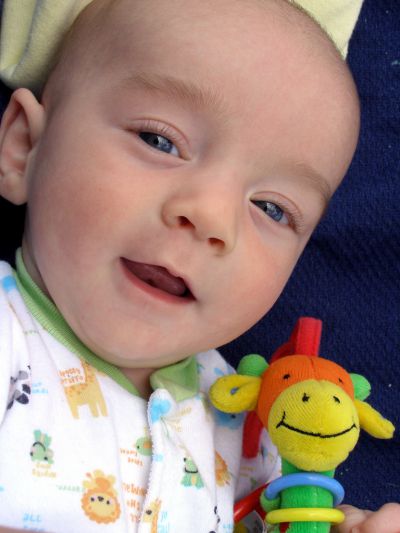
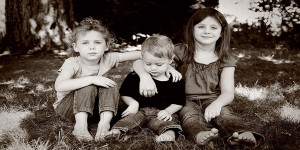

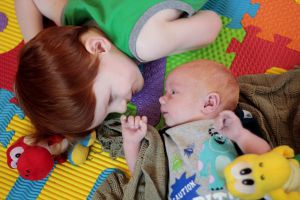

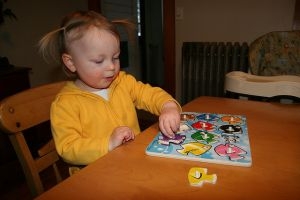 Toddlers have a greater understanding of the world around them by this stage. Their cognitive development (also known as intellectual development and thinking skills) continues
Toddlers have a greater understanding of the world around them by this stage. Their cognitive development (also known as intellectual development and thinking skills) continues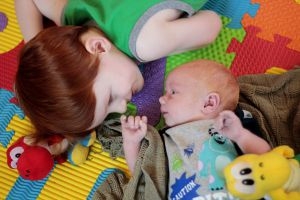 Infants begin to develop trust when parents begin to fulfil their needs. Such as changing an infant's nappy when needed, feeding on request and holding
Infants begin to develop trust when parents begin to fulfil their needs. Such as changing an infant's nappy when needed, feeding on request and holding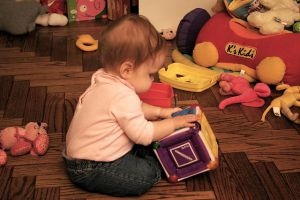 Beginning at birth the construction of thought processes, such as memory, problem solving, exploration of objects etc, is an important part of an infant’s cognitive
Beginning at birth the construction of thought processes, such as memory, problem solving, exploration of objects etc, is an important part of an infant’s cognitive Toddlers want to do more on their own and do not like it when you begin to establish limits on their behaviour. Tantrums can become
Toddlers want to do more on their own and do not like it when you begin to establish limits on their behaviour. Tantrums can become Your preschooler is now able to focus their attention more accurately and is less influenced by distractions. The intensity of questions increase as your child
Your preschooler is now able to focus their attention more accurately and is less influenced by distractions. The intensity of questions increase as your child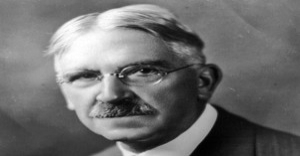 John Dewey is often seen as the proponent of learning by doing – rather than learning by passively receiving. He believed that each child was active,
John Dewey is often seen as the proponent of learning by doing – rather than learning by passively receiving. He believed that each child was active,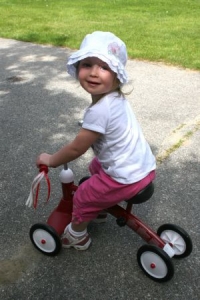 Toddler advance and gains new skills in Gross Motor Development milestones achieved throughout earlier years. Co-ordination and challenges that could not be performed before such
Toddler advance and gains new skills in Gross Motor Development milestones achieved throughout earlier years. Co-ordination and challenges that could not be performed before such Erik Erikson developed a psychosocial theory to understand how we each develop our identities through eight stages of psychosocial development from infancy to adulthood. The
Erik Erikson developed a psychosocial theory to understand how we each develop our identities through eight stages of psychosocial development from infancy to adulthood. The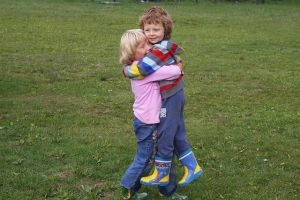 At this point preschoolers begin to interact effectively with others. Play becomes more innovative and organized and “boyfriend” or “girlfriend” begins to emerge. Preschoolers have
At this point preschoolers begin to interact effectively with others. Play becomes more innovative and organized and “boyfriend” or “girlfriend” begins to emerge. Preschoolers have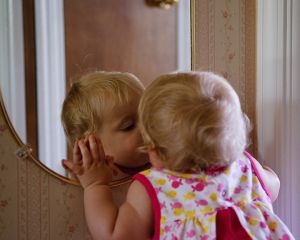 From now, babies begin to identify and respond to their own feelings, understanding other's feelings & needs and interact positively with others. A baby's social and
From now, babies begin to identify and respond to their own feelings, understanding other's feelings & needs and interact positively with others. A baby's social and
